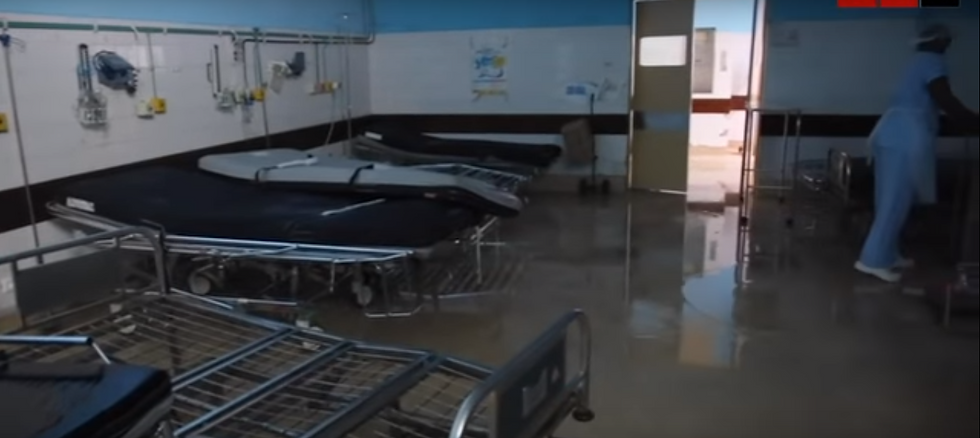What happens when disaster meets the disadvantaged?
- GASOC
- Mar 24, 2019
- 3 min read
If you’ve been awake the past couple of weeks, you won’t have been able to escape the news of Tropical Cyclone Idai.

On 14th March 2019, Cyclone Idai made landfall at the port of Beira in central Mozambique[1], destroying 90% of the area around Beira[2], as well as bringing further heavy rains and flooding across the regions of greater Mozambique, Zimbabwe and Malawi.
Over 2 million people have been affected[3], with destruction of homes, road networks, communication lines, electricity systems, farming land, and shortage of food and drinking water.

This has had an explosive impact on the health of the population. If we break this down, we can perhaps give two main reasons for this health crisis:
The disaster itself.
The health care system already in place.
Firstly, the destruction from the cyclone itself has affected health in numerous ways, including[4]:
Waterborne disease: contamination of water supplies with storm water and sewage.
Spread of disease (eg. TB/malaria/dengue): no shelter and increased contact/exposure
Deterioration of chronic illnesses (eg. diabetes, HIV): shortage of medical supplies
Malnutrition: lack of food
Maternal and child health: reduced access to medical care during and after birth
Trauma: crush injuries, fractures, wounds and related sepsis
We presume many of these health issues would affect a country hit by such a disaster.

However, let’s now take a look at Mozambique’s population and health care system:
54% of the population live in absolute poverty[5] and the life expectancy is 49 years (lower than the 51 years average of sub Saharan Africa)[6].
30% of the population cannot access health services at all, and only 36% of people live within 30 minutes of a healthcare facility[5]. In fact, there is just one hospital in Beira (Central Hospital). The entire surgical floor was flooded, the roof damaged, equipment destroyed and power supplies cut off. This meant the surgical theatre, recovery rooms and wards were out of use. Operations were suspended and trauma patients could only have limited treatment [7,8].

Government expenditure on health has dropped to 12.6% from 17.9% (2009)[6]. Therefore it relies heavily on international aid, but a controversial loan deal in 2016 resulted in suspension of some of this international aid[3].
Limited anaesthestic provision (290 anaesthestic providers for a population of >25 million) [9].
Limited surgical workforce, with ‘tecnicos de cirurgia’ taking on most of the surgical care[6]. These are midlevel health workers trained to perform emergency surgery and are often the only available healthcare professionals in rural areas. They work effectively but there is a shortage of skilled supervisors and surgeons to train them.
Despite best efforts, natural disasters are unpredictable and unavoidable. The question is, do all disasters affect all countries in the same way? If this same cyclone had hit the UK, would the health crises have been the same? I would argue not, due to the extensive services available and the capability to respond more adequately to the disaster.
Beira had one hospital and operating theatre, which was unusable following the cyclone.
In the UK, our healthcare system is so extensive, that we have numerous medical providers in one region, and if a whole region is affected, surrounding areas are close at hand to assist. In 2014, when the south of England was hit by severe flooding, our main concern was that of losing homes, businesses, power supplies and transport links.
Our concern wasn’t of losing lives.

References
WHO. WHO sending urgent health assistance after Cyclone Idai displaces thousands of people in Southern Africa. Available at: https://www.afro.who.int/news/who-sending-urgent-health-assistance-after-cyclone-idai-displaces-thousands-people-southern [accessed 24 March 2019].
MSF. Cyclone Idai & Malawi flooding crisis update. Available at: https://www.msf.org/crisis-update-cyclone-idai [accessed 24 March 2019].
Goodman J, Giles C. Cyclone Idai: how prepared was southern Africa. Available at: https://www.bbc.co.uk/news/world-africa-47639686 [accessed 24 March 2019].
Schroeder A. Health risks rise in the wake of cyclone Idai. Available at: https://www.directrelief.org/2019/03/health-risks-rise-in-the-wake-of-cyclone-idai/ [accessed 24 March 2019].
WHO. Mozambique’s health system. Available at: https://www.who.int/countries/moz/areas/health_system/en/index1.html [accessed 24 March 2019].
WHO. Annex 6 Mozambique. Available at: https://www.who.int/workforcealliance/knowledge/resources/MLHWCountryCaseStudies_annex6_Mozambique.pdf [accessed 24 March 2019].
EWN. Cyclone Idai: Beira hospital surgical wing destroyed. Available at: https://ewn.co.za/2019/03/23/cyclone-idai-beira-hospital-surgical-wing-destroyed [accessed 24 March 2019].
EWN. Mosambicans rebuild after cyclone Idai. Available at: https://ewn.co.za/2019/03/22/mozambicans-start-rebuilding-after-cyclone-idai [accessed 24 March 2019].
Lyon CB et al. Anesthetic care in Mozambique. Anesth Analg 2016; 122 (5): 1634-9.
By Lizzy Tan

Comments